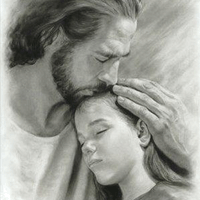The Miracle of Touch
A warm embrace. A healing hand. An affectionate pat. Touch has an uncanny power to do some much!

You’ve heard it said that everybody needs a hug. We human beings have been given the five external senses for reasons that go beyond mere sensual input and pleasure, though we live in an age that seems to want to diminish them to their most basic and selfish purposes alone.
There is no larger sense than our sense of touch, though. That sense encompasses the whole body. Our hands are not the only source of our sense of touch. They are the principle instruments we use to touch the world, but our whole body can be a receptive medium for “feeling” the touch of others.
The importance of touch is known to us from the earliest moments of our lives. The infant needs the loving touch of its parents. It is not just the need of the pleasure of that touch, but it is an absolute need for its very survival and its well-being. It has been observed in science that those babies who are not touched do not thrive.
The fact of the matter is that this is true for us all of our lives. The embrace of the other promotes self-worth, self-esteem, and the desire to reciprocate. The Incarnation of God in Jesus seems to make this very evident. Much of the public ministry of Jesus was done through the miracle of touch. He healed the blind, raised the dead, lifted Peter up after he began to sink while walking on the water. Jesus, we can be certain, embraced his mother, welcomed his friends, his disciples with an embrace when they had been separated for a time.
But there is a dark side of touch too. Jesus knew this intimately. He knew the pain of the soldier’s slap when he stood before the High Priest, he felt the searing sting of the lash, the prick of the crown of thorns, the bite of the nails in his hands and feet, and the terrible weight of the burden of all of our sins as he hung suspended between the rejection of earth and the silence of heaven.
When Jesus rose from the dead the first person he met was Mary Magdalene. In her joy at finally recognizing who he was she wanted to hold him, to embrace him, to cry her tears of joy on his breast. But Jesus’ response was, “Noli me tangere,” or “Touch me not.” Many works of art have been inspired by these words over the ages. What did he mean in these words?
Another translation from the New Revised Standard Version translates Jesus’ words to, “Do not hold on to me, because I have not yet ascended to the Father…” While some might think the words ‘do not touch me’ had something to do with cleanliness or appropriate behavior, or think that Mary’s reaching out, and her desire to touch Jesus was in some way wrong and prohibited. The word ‘hold’ implies that Mary had already touched Jesus. She is perhaps hugging him as you and we would want to do if it were ourselves who had been fortunate enough to be in her place.
It is not this that Jesus is referring to, but rather something more like, ‘Do not hold on to me. Go, rather, and tell my brothers and say to them, I am ascending to my Father and your Father, to my God and your God,’ It was not that Mary’s touch was somehow wrong, but rather that there were other priorities.
Mary, like us, would have wanted to stay with the risen Jesus. We can understand her not wanting to let go. But this event was the beginning of something new in the world. Everything had changed and others needed to be told. Later, Thomas would refuse to believe that Jesus had risen until he could put his hands into the wounds in Jesus’ hands and side. Thomas would be invited by Jesus to do just so when he entered the upper room on the second occasion.
God gave us this miracle of touch. Jesus made its value evident to us in his life, his death and in his resurrection. He made it possible for us to touch him with our human hands. God’s gift then is miraculous indeed. And like all gifts, we should give God thanks for it by using it properly, to heal, to lift one another up, and to welcome each other in the life giving embrace of love.
SKM: below-content placeholderWhizzco for FHB

